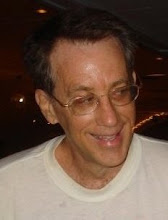Paul Millsap is the NBA's version of Jim Brown
Paul Millsap, the Utah Jazz second-round draft choice from Lousiana Tech, is the early favorite to win Rookie of the Year. He also appears to have more long-term potential than anyone else in the 2006 NBA draft, even Tyrus Thomas. The guy Millsap reminds me of is not any hoopster, but the greatest runner in NFL history, Jim Brown.
Millsap, like Brown, combines speed, power, body control, explosive quickness and elusiveness. He even looks a little like Brown and at times seems to be a "man playing with boys," which was ALWAYS the case with Brown. He’s a complete player on both ends of the court, a rebounding monster, a nice shooter and a terrific finisher around and under the basket, which is another aspect of the NBA game where the men set themselves apart from the boys. The boys are trying just as hard (the repeatedly stuffed Knick Charles Smith comes to mind), but they simply don't have the men's ability or combination of abilities to get the job done in the crowded space around the hoop. Millsap gets it done.

